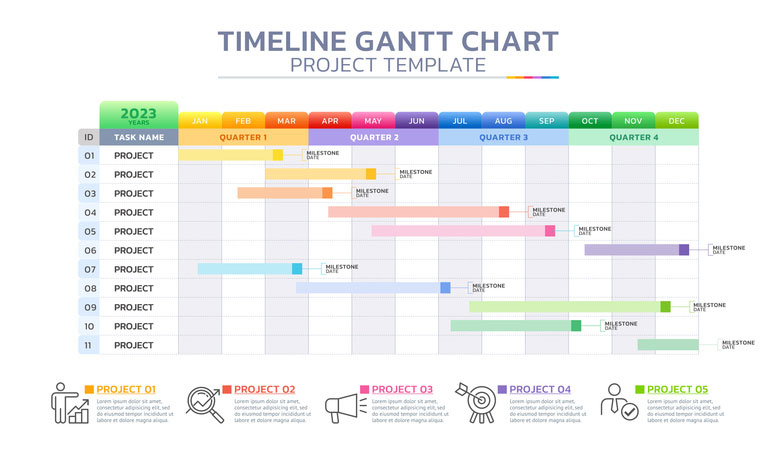Written by Helen Lewis
One of the cornerstones of your education as a Doctor of Nursing Practice (DNP) student is the capstone, an ambitious project that applies what you’ve learned in the classroom to real-world clinical settings with the aim of affecting meaningful results.
In the following article, we’ll explore some of the steps that go into the capstone process, touching on themes like:
- Choosing your topic
- Resources for research
- Identifying your stakeholders
We’ll also touch on ideas like time management, presentations, and what comes next.
The Capstone Project: An Overview
The capstone project is a hallmark of the Doctor of Nursing Practice (DNP) program, marking a significant milestone in your journey as a nursing professional.
Essentially, your capstone is your chance to dive deep into a clinical issue, explore innovative solutions, and implement meaningful change in your field. Think of it as the culmination of all your hard work and learning, where you get to showcase your expertise, leadership, and the practical application of your knowledge. Whether you’re focusing on improving patient outcomes, enhancing healthcare systems, or advancing nursing practices, your capstone project is where theory meets practice in a big way.
Throughout the process, you’ll engage in rigorous research, collaborate with healthcare professionals, and utilize evidence-based practices to address the problem at hand. Your capstone isn’t just about identifying an issue, but also about devising and executing a plan that makes a tangible difference. The capstone project is also an opportunity to reflect on your growth as a leader and practitioner, integrating the advanced skills you’ve developed during your DNP program. By the end, you’ll have a comprehensive project that not only benefits your professional development but also contributes to the broader field of nursing, making a lasting impact on patient care and healthcare delivery.

Choosing Your Topic
Selecting a topic that is both relevant to your field and has the potential to make a significant impact is crucial for a successful capstone project.
Begin by reflecting on your clinical experiences and the challenges you’ve encountered. Ask yourself questions like:
- Choosing your topic
- Resources for research
- Identifying your stakeholders
Engaging with colleagues, patients, and other stakeholders to gather their perspectives on pressing issues not only helps in identifying a relevant topic, but also ensures that your project addresses real-world problems that matter to those directly involved. It’s also likely that if your colleagues and patients care about a certain issue, you’ll care about it, too!
Tips for Choosing Your Topics
Start by thoroughly understanding the specific requirements and guidelines provided by your DNP program, and familiarize yourself with the scope, objectives, and deadlines. Knowing the framework within which you need to work is crucial for planning and executing a successful project. Don’t be afraid to ask for help – that’s what your instructors are there for!
When narrowing down your topic, it’s essential to balance your ambition with what you can realistically achieve.
One helpful place to consider potential weak points is the availability of resources at your institution, such as data, technology, and support from your instructors, which are crucial for the successful implementation of your project. Another helpful thing to consider is your own schedule. Are you thinking of taking on an amount that’s simply too much for one person to achieve? Can this realistically be completed in the time you’re allotted? For reference, a capstone project typically takes one to two years.
Another helpful place to start is with focus. Your chosen issue should be specific enough to allow for a concentrated approach, but broad enough to demonstrate meaningful impact. For instance, rather than addressing general patient safety, you might focus on reducing medication errors in a particular department. Ensure that your topic aligns with your career goals and interests, as this alignment will keep you motivated throughout the project’s duration.
Finally – and possibly most importantly – choose a topic that you’re passionate about! Your enthusiasm will sustain you through the research and implementation phases, which can be time-consuming and challenging. Passion not only drives perseverance but also inspires creativity and innovation, which are vital for overcoming challenges and achieving your project’s objectives. Engaging deeply with a topic you care about can lead to more insightful findings and a more profound sense of accomplishment upon completion.
Conduct a Literature Review
Another step in your capstone process is turning to the work that has already been conducted and analyzing it for potential oversights.
A thorough literature review is essential for understanding the existing body of knowledge and identifying gaps that your project can address.
Some helpful resources could include:
- California Digital Library (CDL): A wide range of academic journals and books.
- PubMed: Medical and clinical research.
- CINAHL: Nursing and allied health literature.
- PsycINFO: Psychology and behavioral sciences.
- Cochrane Library: Systematic reviews and protocols.
- EMBASE: Biomedical and pharmacological research.
- Scopus: Multidisciplinary scholarly articles.
- JBI Database: Evidence-based practice resources.
- Web of Science: Multidisciplinary research articles.
- ProQuest Nursing: Nursing and health journals.
- ClinicalTrials.gov: Clinical trial information.
Additionally, your university librarian is likely to have a wealth of knowledge related to sources that you can search through in order to conduct your research.
As you review the literature, take detailed notes and organize your findings thematically to identify trends, commonalities, and areas of controversy. Be critical in your assessment of the quality and relevance of the studies, paying close attention to their methodologies and outcomes.
By synthesizing the information you gather, you can develop a comprehensive understanding of your topic, which will inform your project’s objectives, design, and implementation. Additionally, the literature review will help you build a strong case for the significance of your capstone project, demonstrating how it addresses an important need or gap in the current body of knowledge.
Develop a Clear and Feasible Plan
Once you’ve decided on your topic, create a detailed project plan outlining your objectives, methodology, and timeline, and identify the resources you’ll need. Define measurable outcomes and consider potential challenges and strategies to address them. A well-structured plan will serve as a roadmap and keep you focused.
One very helpful planning tool is a Gantt chart. Gantt charts are a visual project management tool that displays the timeline of a project. These charts use horizontal bars to represent different tasks or activities, with the length of each bar corresponding to the task’s duration. The chart shows the start and end dates of each task, as well as their interdependencies, making it easy to see how tasks overlap and relate to each other. This helps in planning, coordinating, and tracking progress, ensuring that the project stays on schedule. Gantt charts are particularly useful for complex projects with multiple tasks and deadlines, providing a clear overview of your entire project at a glance.
Secure Stakeholder Support

Another key factor of your capstone work is to remember that you’re not alone!
As you get started in your capstone project, identify who your key stakeholders are. (Tip: It’s helpful to do this early in the process.) Your stakeholders may include clinical mentors, healthcare administrators, colleagues, and patients. Their support and insights can provide valuable feedback, facilitate project implementation, and enhance the sustainability of your project over time.
Finding the Right Stakeholders Outside of Your Institution: California-Based Resources
In addition to mentors and professors inside your organization, one great resource in your capstone work can be found in professional networks and associations such as the California Nursing Association (CNA) and the California Association for Nurse Practitioners (CANP). These organizations offer networking opportunities, conferences, and forums where you can connect with experienced professionals and potential collaborators who share your interests.
Additionally, exploring partnerships with local healthcare systems, such as Kaiser Permanente or Sutter Health, can open doors to resources and support for implementing your project.
Evaluate and Reflect
Continuously evaluate the effectiveness of your interventions using appropriate metrics and data analysis techniques. Reflect on what worked, what didn’t, and why, and be prepared to make adjustments as necessary. The evaluation phase is critical for demonstrating the impact of your project!
Some helpful resources could include:
- Statistical Software: Tools like SPSS or SAS for data analysis are invaluable. These programs help you crunch the numbers and make sense of your data, ensuring your findings are robust and reliable.
- Qualitative Research Methods: Books and courses on qualitative methods can provide you with the tools for in-depth evaluation. Understanding the nuances of qualitative data can give you deeper insights into your project's impact.
- Surveys and Questionnaires: Designing and distributing surveys can gather valuable feedback from participants. Tools like SurveyMonkey or Google Forms make it easy to collect and analyze responses.
- Focus Groups: Conducting focus groups allows for rich, detailed feedback and discussion, and can uncover insights that quantitative data alone might miss.
- Benchmarking: Comparing your results with industry standards or similar projects can help gauge your success. This process provides a context for your findings and highlights areas for improvement.
- Peer Reviews: Having colleagues review your work can provide new perspectives and critical feedback. It's a great way to ensure your evaluation is thorough and unbiased.

Another helpful step could be attending workshops and seminars on project evaluation and data analysis. In addition to helping you enhance your skills and keep you updated with the latest methodologies, you’ll be connecting with like minded professionals, having the opportunity to share information about your capstone work with them. This could not only introduce you to potential stakeholders for the duration of your capstone work, but could also yield fruitful rewards down the line as you seek employment, a professional network, and/or publication.
Present and Disseminate Your Findings
At the end of your capstone, you’ll be presenting project findings with a broader audience. This can include writing a comprehensive report, creating a presentation for your academic institution, and submitting your work to professional journals or conferences.
As you lead up to this step, practice your presentation skills and seek feedback from peers and mentors. Going to workshops, seminars, conferences, and other professional events with people in the field could also be a useful way to practice your public speaking skills, as well as describing your capstone work in a concise and compelling way.
At the End, Reflect on Your Growth
Finally, a key step in the capstone process will be making time to reflect on what you’ve learned and the skills you have developed. The capstone project is not just about the end result, but also about your growth as a nursing leader and practitioner.
By following these steps and utilizing available resources, you can create a robust, impactful capstone project that will not only fulfill your DNP requirements but also contribute to the advancement of nursing practice in California.

